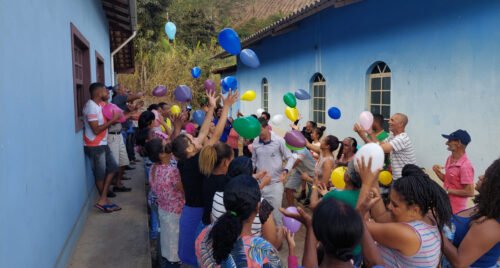Forest restoration and ecosystem initiatives converge on actions aimed at mitigating climate change as formalized in the Paris Agreement, an international panel negotiated among 196 parties, with the vast majority of countries, including major CO2 emitters, ratifying their commitments to the goal of keeping the average global temperature increase below 2 (two) degrees Celsius relative to pre-industrial levels. More recently, they repactured to limit the temperature increase to a maximum of 1.5ºC.
Each signatory party has, therefore, assumed concrete targets that must be met for these expectations to be effectively achieved. To do so, signatory parties established their respective NDCs (Nationally Determined Contributions) in 2016. In this context, the path forward requires the development of effective strategies.
In 2022, the Brasilian Federal Government released a document edited by the Climate Office of International Relations, part of the Ministério do Meio Ambiente, titled "Guidelines for a National Climate Neutrality Strategy" to be achieved by 2050. Focusing on measures related to the land-use change and forestry sector, the document outlines the following initiatives:
- reduzir o desmatamento ilegal, a partir de 2022, em 15% por ano até 2024, 40% em 2025 e 2026, e 50% em 2027, atingindo a meta de zerar o desmatamento ilegal em 2028;
- restaurar e reflorestar 18 milhões de hectares de florestas, para múltiplos usos, até 2030.
In April 2023, during the Forum of Major Economies on Energy and Climate, the Brazilian Government reaffirmed its commitment to restore 12 million hectares (originally ratified in 2016) by 2030.
According to data from the Restoration and Reforestation Observatory, a platform developed by the Coalition Brazil Climate, Forests, and Agriculture, which includes representatives from the financial and industrial sectors, educational and research institutions, as well as civil society, the efforts accounted for in this database since 2015 indicate 79.13 thousand hectares of Ecological Restoration (following the concept of the Society for Ecological Restoration Science & Policy Working Group, 2004); 10.99 million hectares of Secondary Vegetation (regeneration without any type of anthropogenic intervention); and 9.35 million hectares of Reforestation (planted forests of native and exotic species primarily for economic exploitation). These figures suggest that, measured against this baseline data, progress towards the restoration goal has been quite modest.
Given this challenging landscape, it is crucial to practically assess the magnitude of the challenge to meet this goal. In this context, it is essential to produce a comprehensive and thorough analysis considering the various dimensions that impact and influence the implementation of the proposed actions.
Logistical obstacles to planting operations, restrictions on access to financial resources, limitations in the supply chain of inputs (e.g., seeds and seedlings), the need for the development of technological and scientific packages that best fit the different realities within the various biomes in the Brazilian territory are good examples of variables in this complex matrix that need to be understood.
In this regard, the Instituto Escolhas, during the Amazon Summitt, a meeting of Heads of State from the Amazon Cooperation Treaty Organization (ACTO), held on August 8 and 9, 2023, presented an updated study published in 2016 that defined the volume of financial investment needed to gradually achieve the Brazilian target of restoring 12 million hectares, limited to the Amazon and Atlantic Forest biomes, by 2030.
It's noteworthy that the calculated investment, following the study's established assumptions (three different restoration models), increased about four times compared to the original forecast, reaching the sum of R$ 228 billion.
On the other hand, projections of net revenues in the order of R$ 776.5 billion have also grown significantly, indicating a scenario of great opportunities for the development of a strong forest market integrated into the actions for the development of a low-carbon economy.
In fact, from the perspective of biodiversity conservation, the development of the bioeconomy, and actions aimed at consolidating the carbon credit market, meeting the goals of restoring altered and degraded areas plays a significant role in Brazil's economic and social development.
CLAM Meio Ambiente, through its Forest Services Division, is prepared to support civil society and the private sector in the development, design, and execution of projects related to forest restoration and its various objectives.
Follow our series on the opportunities of the Brazilian Forest Market here.




